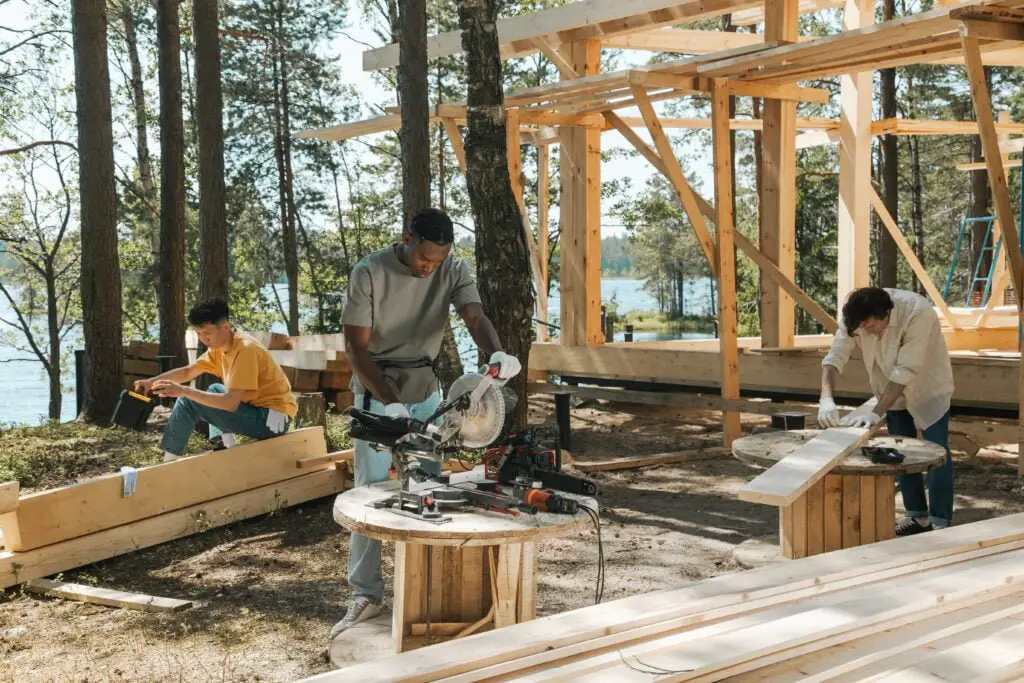In the realm of structural engineering, shear walls stand as an essential component, playing a critical role in ensuring the stability, safety, and overall performance of buildings and structures.
These vertical elements effectively resist lateral forces such as wind, seismic loads, and other lateral pressures that a building might experience.
This article delves into the construction, design considerations, materials, and significance of shear walls in contemporary construction practices.
1. Shear Wall Basics:
Shear walls are vertical structural elements designed to resist lateral forces acting parallel to their plane.
These forces can arise from wind, earthquakes, or other external loads. Shear walls work by transferring the lateral loads to the foundation, reducing the building’s sway and preventing excessive deformation during dynamic events.
2. Design Considerations:
When designing shear walls, engineers consider various factors to ensure their effectiveness:
- Location and Spacing: The positioning and spacing of shear walls are critical for distributing lateral loads uniformly. They are often strategically placed at the building’s corners, around stairwells, or along exterior walls.
- Material Selection: Shear walls can be constructed from various materials, such as reinforced concrete, masonry, or steel. The material’s strength, stiffness, and durability are taken into account during the design process.
- Height and Aspect Ratio: The height-to-width ratio of a shear wall, known as the aspect ratio, influences its behavior under lateral loads. An appropriate aspect ratio ensures that the shear wall can effectively resist bending and shear forces.
- Openings and Open Structures: The presence of openings like doors and windows affects a shear wall’s structural integrity. Engineers carefully design these openings to maintain the wall’s load-bearing capacity.
- Boundary Elements: Properly integrating shear walls with other structural elements, like beams and columns, is crucial for seamless load transfer and overall stability.
3. Shear Wall Construction:
The construction process of shear walls involves several key steps:
- Foundation Preparation: The foundation is excavated and prepared, ensuring proper compaction and reinforcement placement to bear the loads transmitted by the shear walls.
- Formwork: Formwork is erected to define the shape of the shear wall. This temporary structure holds the concrete in place until it cures and gains sufficient strength.
- Reinforcement Installation: Reinforcing bars (rebars) are placed within the formwork following the structural design. These rebars enhance the shear wall’s strength and ability to withstand lateral forces.
- Concrete Pouring: Concrete is poured into the formwork, encapsulating the rebars. Proper vibration techniques are used to eliminate air pockets and ensure uniformity.
- Curing: After pouring, the concrete is allowed to cure and gain strength gradually. Curing is essential to prevent cracks and enhance the concrete’s durability.
- Formwork Removal: Once the concrete reaches its specified strength, the formwork is removed, revealing the finished shear wall.
4. Significance of Shear Walls:
The importance of shear walls in construction cannot be overstated:
- Structural Stability: Shear walls contribute significantly to a building’s overall stability, preventing excessive lateral deflection and deformation during seismic events or high winds.
- Load Distribution: By effectively transferring lateral loads to the foundation, shear walls help maintain equilibrium and prevent structural failure.
- Occupant Safety: Shear walls enhance the safety of occupants by reducing building sway and minimizing the risk of collapse during earthquakes or strong winds.
- Architectural Flexibility: Modern construction techniques allow for shear walls to be concealed within the building envelope, preserving aesthetic design while maintaining structural integrity.
Conclusion:
Shear walls are pivotal components in the world of structural engineering, serving as guardians against lateral forces that threaten a building’s stability. Their proper design, material selection, and construction ensure that structures can withstand the challenges posed by dynamic events such as earthquakes and powerful winds.
As technology and engineering practices continue to advance, shear walls will remain a cornerstone of safe and resilient construction.
To see other material construction prices, please see here.
To know other construction guides, tips, and methodology for beginners, veterans, and contractors, please see here.

